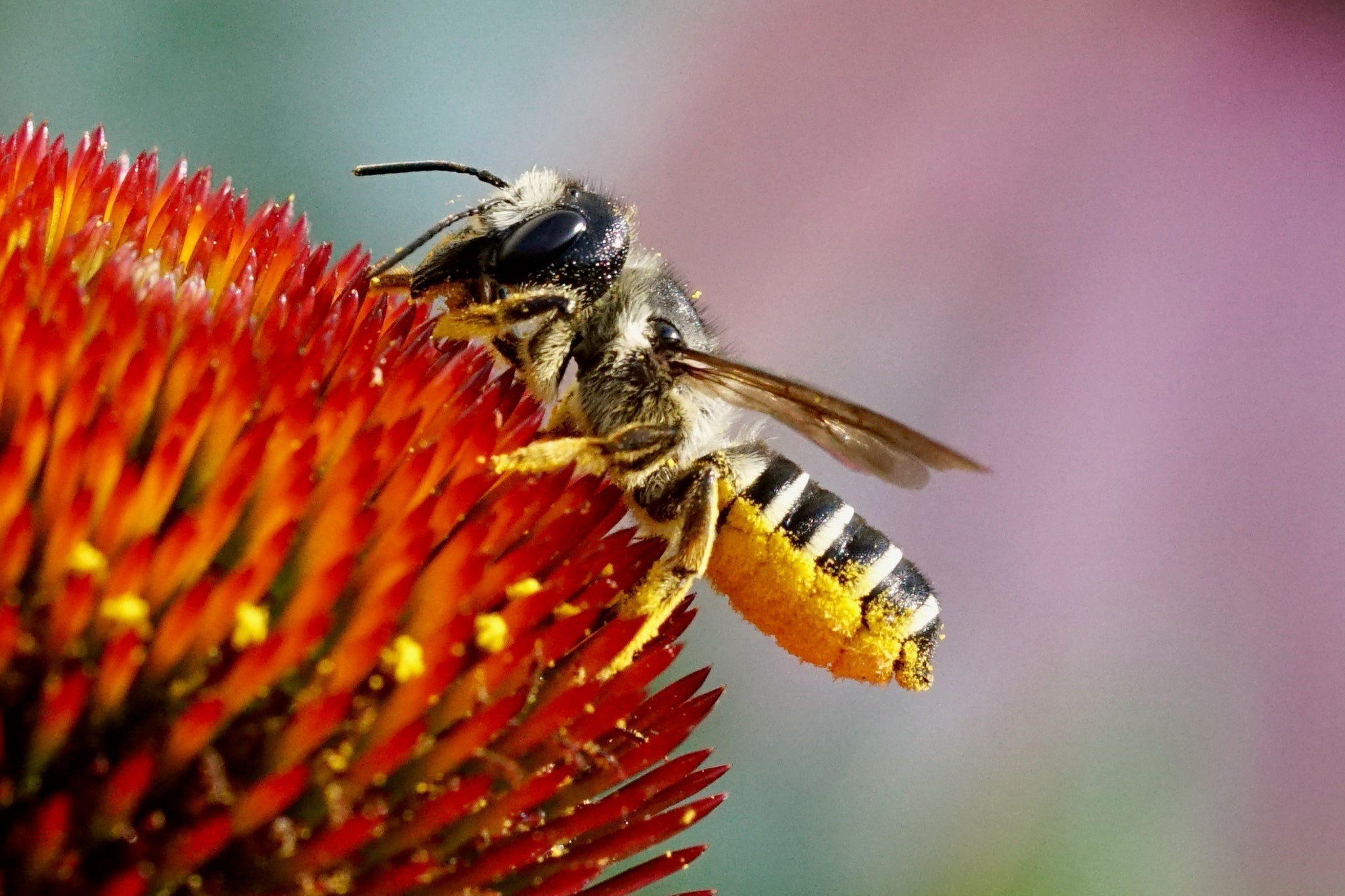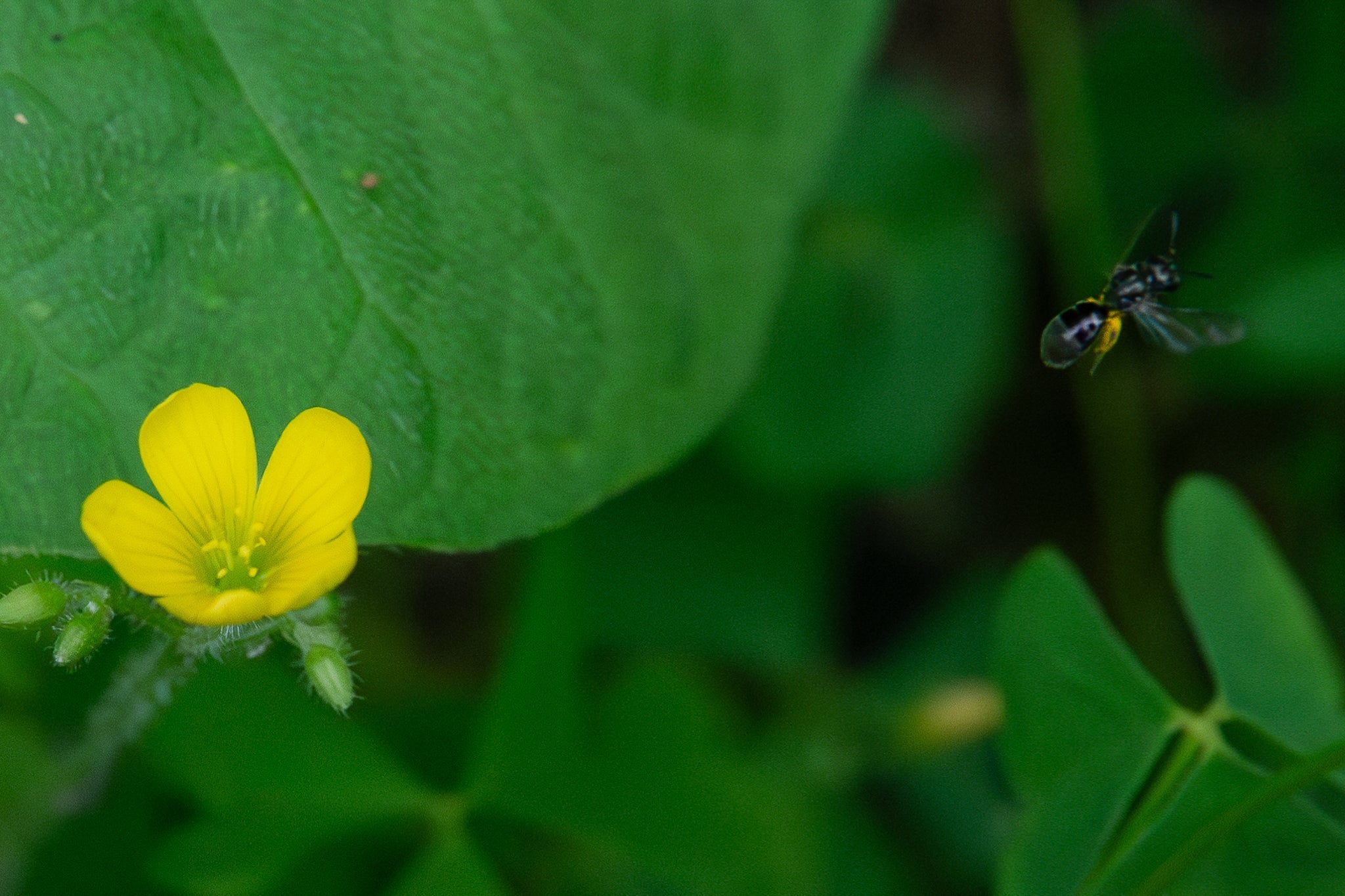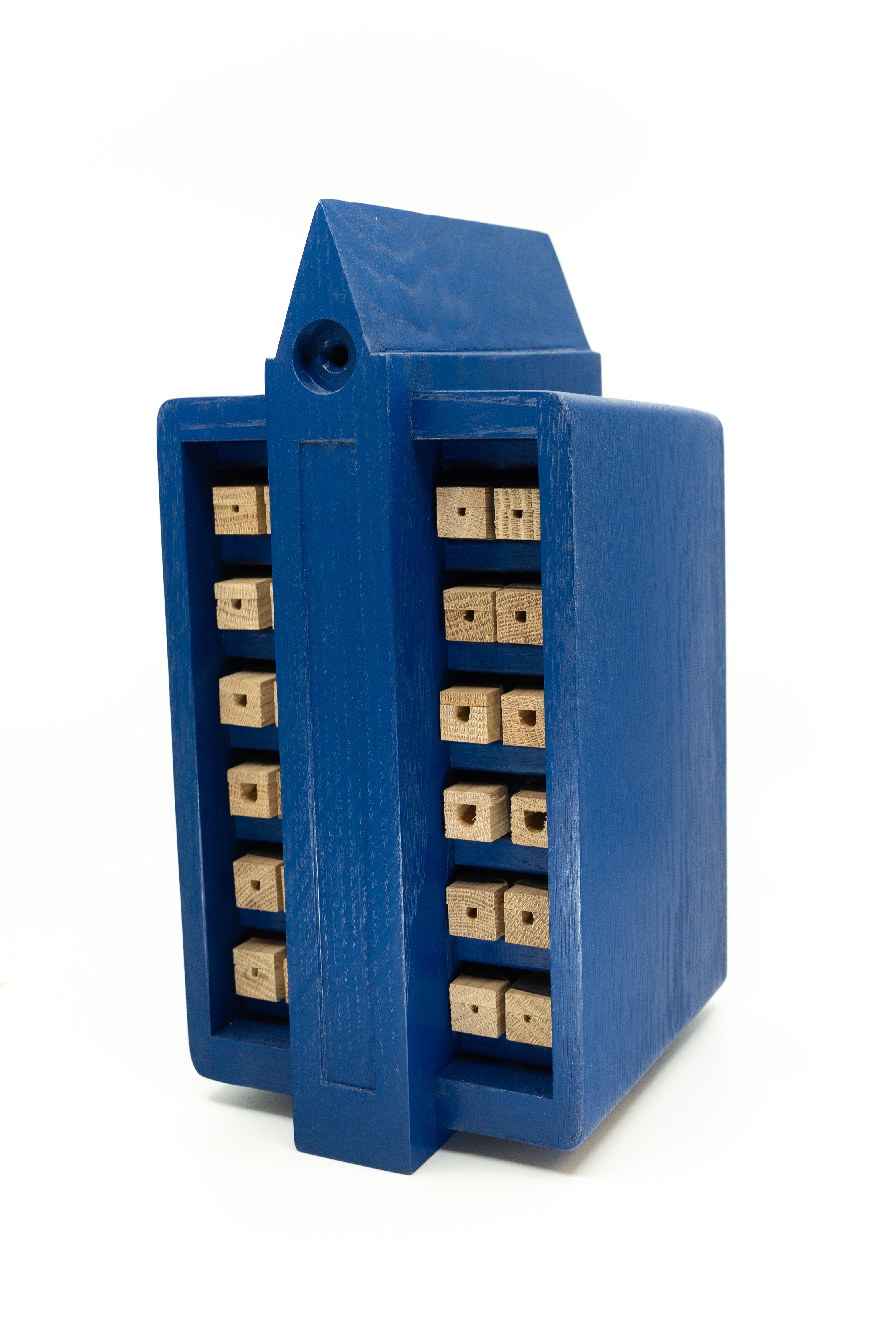When many people talk about the bees that live in bee hotels, they bring up the ones that are commonly used in agriculture: the genera Osmia and Megachile. (More commonly, but somewhat inaccurately, called Mason and Leafcutter bees.) The reality, however, is far more fascinating, with at least 110 different species of solitary, cavity-nesting bees (and wasps!) in the US and Canada alone. Even more interesting, if you happen to live in certain regions of the continent such as parts of Florida, you may find that you have activity in your bee hotel year round.
To make it easier to see which kinds you may find in your own yard, we've collected iNaturalist sightings for every cavity nesting bee and wasp species we could identity in the United States and Canada across 16 genera, and within a 250km (~155 mile) radius of all the human-populated areas. To see for yourself, all you need to do is type your city or town into the map below, and the rest of the page will update to show who has been found in your area. (And if you're really keen, have a look at the species lists linked below and let us know if we happened to miss any.)
Get Started By Typing In Your Town or City Below
The chart below shows the length of the season for cavity-nesting species in your area, with the combined observations of all the bees and wasps near where you live.
Note: These results are based on community-reported data, so if nobody in your area has been keeping a close eye on the solitary bees and wasps, certain species may be going under-reported. If you'd like to help fix that, head over to iNaturalist.org and have a look at their Seek and iNaturalist apps.
Next, we'll take a look a the individual genera in alphabetical order.
Ancistrocerus

Ancistrocerus is a genus of potter wasp that is named for the way the last segment of the antennae on the males is hooked. (The definition of ancistroid literally means "hook shaped.") One of the species we track, the Yellow Ab Wasp (Ancistrocerus tuberculocephalus) is considered imperiled in Canada.
Dipogon

Dipogon is a type of wasp that feeds on spiders. Their name means "two beard" and comes from the tufts of hair on the females that are below their mandibles which play a role in nest construction. These are very small wasps, with sizes ranging from 3-12mm, that are generally not well studied or understood.
Euodynerus

Euodynerus is another genus of potter wasp, closely related to Pachodynerus (covered below). Some species, like the Grand Mason Wasp (Euodynerus megaera), Euodynerus schwarzi, and Euodynerus hidalgo are considered critically imperiled in Canada.
Heriades

Heriades is a genus of solitary bee that often make their nests out of resin. They are typically black, and have mandibles that are well suited for scraping resin off plants. Their name means "wool", and is likely a reference to the patches of hair found on the abdomen of some species. They are typically very small, with sizes ranging from 4-7mm.
Hoplitis

Hoplitis are a genus of bee, often dark in colour, who carry pollen in brushes of hair under the abdomen called scopae. They are usually smaller in size than Osmia and Megachile bees (covered below) with lengths ranging from 3-18mm, and often have white hairs separating the sections of their abdomen.
Hylaeus

Hylaeus are a genus of bee most oftened called "masked bee" for the distinctive mask-like colouring on their faces of the males. They are often mistaken for wasps, as they have the rare attribute among bees of not having an external scopa to carry pollen and nectar, which they instead carry internally in their crop. Their nests are constructed with a cellophane-like liquid that is produced from their Dufour's gland.
Isodontia

Isodontia are more commonly known as grass-carrying wasps, as they construct their nests out of strands of grass or hay. Their nests will often be filled with small grasshoppers, locusts or crickets that they capture to feed their young. In their interactions with humans, you can sometimes find their nests in the narrow gaps around windows.
Megachile

Megachile is a large genus of solitary bee, often called leaf-cutters (though that isn't always accurate, with some species preferring to use materials other than leaves to make their nests).
Numerous species, such as the Sculptured Resin Bee (Megachile sculpturalis), Woolly Wall Bee (Megachile lanata), and Alfalfa Leafcutter Bee (Megachile rotundata) are considered introduced species in parts of North America. Megachile angelarum is considered critically imperiled in parts of the US and along with Megachile gentilis is considered vulnerable in Canada.
Monobia

Monobia is another species of potter wasp primarily occuring in the eastern United States and Canada, and parts of Mexico. They typically produce two generations per year, with the adults primarily feeding on a diet of pollen while providing their young with caterpillars.
Osmia

Osmia is a genus of bee often called "mason bees" because of their tendency to construct their nests from mud or similar substances. This is a large genus with the bees coming in a wide range of colours and sizes. They generally emerge early in the season when temperatures are still low, and produce only one generation per year.
The Horn-faced Mason Bee (Osmia cornifrons), Blue Mason Bee (Osmia caerulescens) and Taurus Mason Bee (Osmia taurus) are all considered to be introduced species in the US and Canada.
Pachodynerus

Pachodynerus are another genus of potter wasp that exists through all of the Americas (but rarely in Canada), and are closely related to Euodynerus.
Parancistrocerus

Parancistrocerus is a large genus of potter wasp that primarily feeds on caterpillars. They are also known for having a symbiotic relationship with saproglyphid mites, with each wasp species having a mite that is specific to them. The Perennial Mason Wasp (Parancistrocerus perennis) is considered imperiled in Canada.
Passaloecus

Passaloecus are a genus of small wasps that feed on aphids (making them a favourite among gardeners), and build their nests from resin. They typically emerge in the spring and produce one generation per year.
Stenodynerus

Stenodynerus is a large genus of potter wasp that is closely related to Parancistrocerus. Unlike Parancistrocerus, however, Stenodynerus do not carry mites on their abdomens.
Symmorphus

Symmorphus is a potter wasp that feeds primarily on caterpillars and beetle larvae. They are distinguished from other potter wasps by subtle differences in parts of their abdomen, that are most easily recognized using a microscope.
Trypoxylon

Trypoxylon are a genus of solitary wasp that is part of the Crabronidae family. They come in a very wide range of sizes, and all known species hunt spiders, and build their nests from mud.
Any feedback?
While we've tried to be as thorough as we could with the data in this article, this can be challenging given the sheer number of species of bees and wasps. Because there is so much variation within a genus with the majority being ground-nesting species, instead of relying on genus-level data, each of the charts included in this article relies on data at the species or sub-species level, which can be sparse for some species given how difficult they can be to identify in the field. If you think we missed an important species or have another correction to offer, reach out to us at info@scopabio.com.





Join Our Newsletter
Share:
Download Our Bee Home Guide